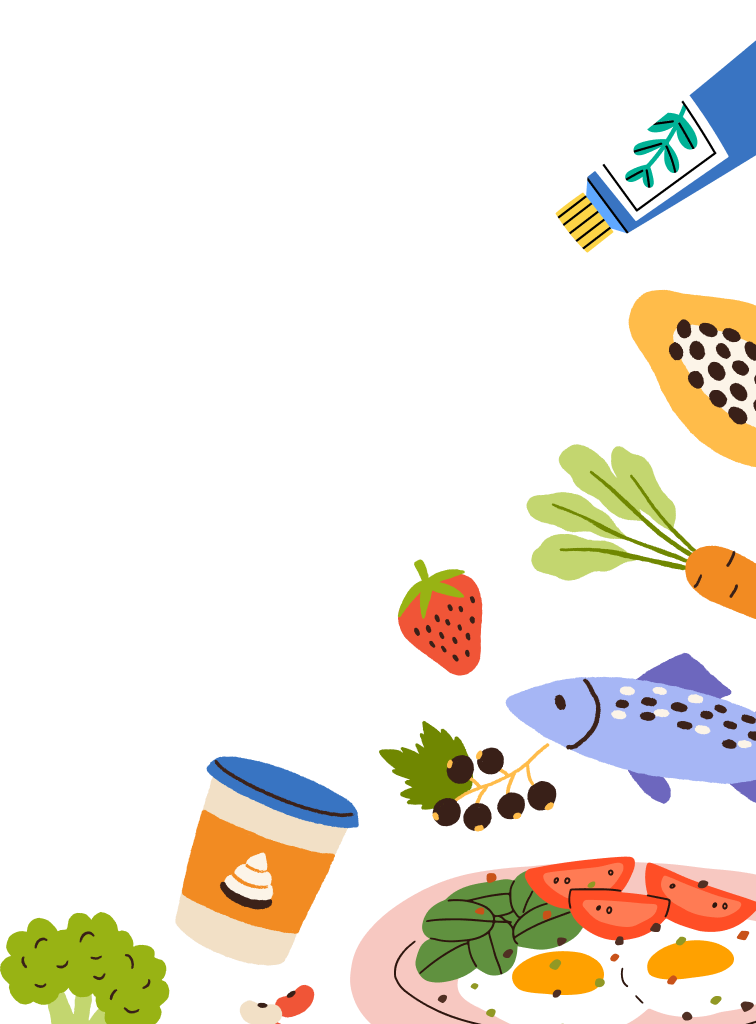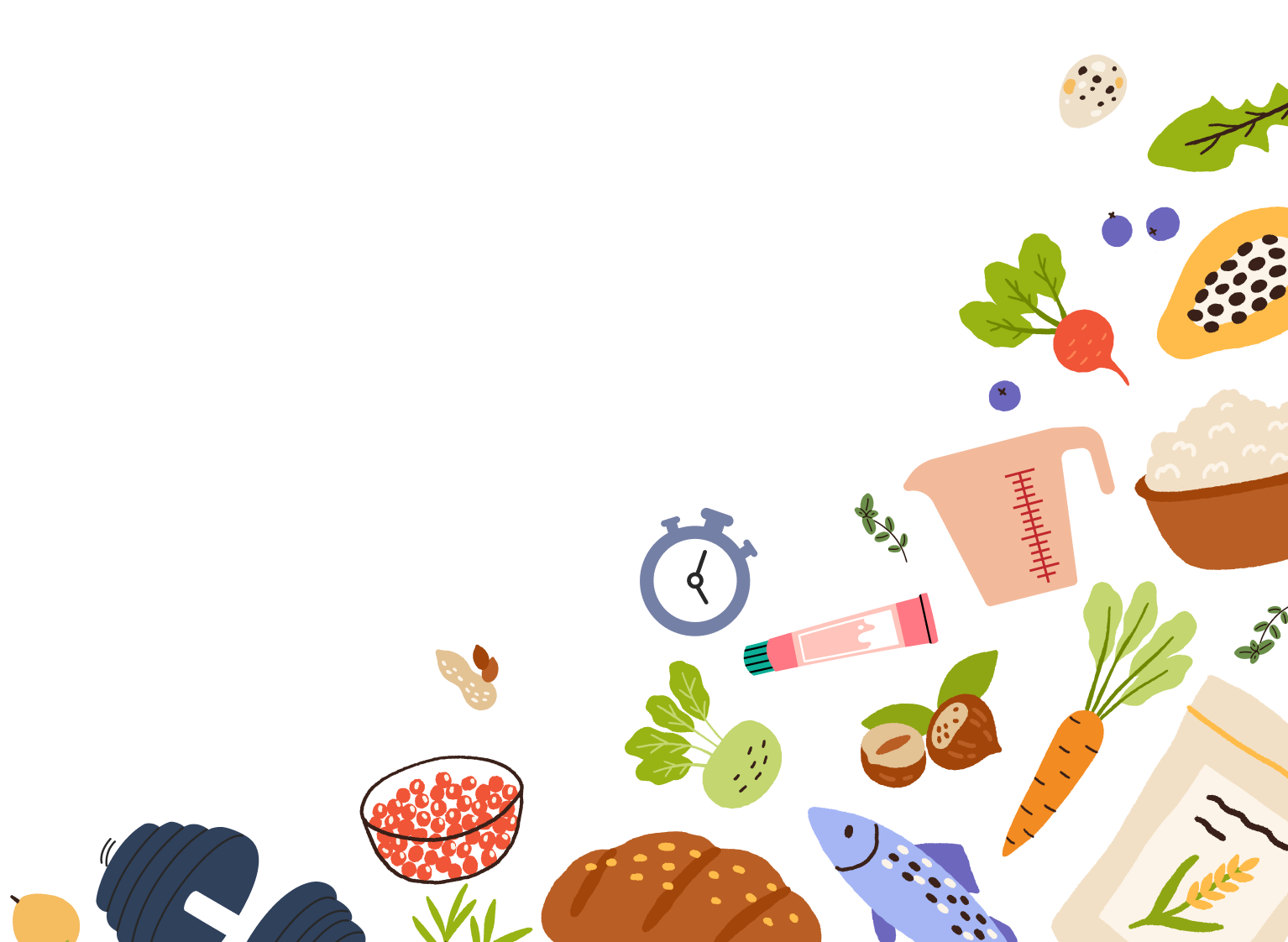Essential Nutrients to Support Healthy Aging and Longevity
Many people fear aging, but in reality, it is a blessing! The good news is that we can make choices that help us age better. Today, I will highlight some specific nutrients that contribute to the aging process and provide examples of their corresponding food sources.
Macronutrients and Longevity: The Role of Protein, Fats, and Carbohydrates
There are three main macronutrients: protein, fat, and carbohydrates. Each one has a unique role to play in the aging process.
Protein: Protein is essential for maintaining and building muscle mass as we age. Regarding physical functioning, higher muscle mass is linked to improved mobility, decreased fall risk and fractures, and increased bone mass. Higher protein diets are also linked to easier weight management. This reduces chronic disease, improves joint pain, and enhances energy levels.
- Examples: chicken, turkey, fish, legumes, and dairy
Carbohydrates: Carbohydrates are the body’s primary energy source. Complex carbohydrates provide more sustained energy on a day-to-day basis. They are also a great source of fiber. High-fiber diets affect aging by reducing cancer risk, improving gut microbiomes, satiety, and so much more.
- Examples: fruits, starchy vegetables, and whole grains
Fats: There are several different types of fats. Our unsaturated fats are the fats most closely linked with healthy aging. Unsaturated fats help fight inflammation, are linked to improved cardiovascular outcomes, and optimize brain health throughout the lifespan. Fats also help the body absorb certain nutrients, including some discussed below.
- Examples: fatty fish, nuts, seeds, and avocado
Essential Vitamins for Longevity: Building Blocks of a Healthier You
Now let’s zoom in closer to investigate health at the micro level- micronutrients, that is! First up is vitamins.
Vitamin D: The “sunshine” vitamin is known for its role in calcium absorption for bone health, which, of course, is essential for aging. It also helps the body reduce inflammation and regulate immune cells.
- Examples: sunlight, salmon, fortified dairy products
B Vitamins: These tiny nutrients are essential for energy metabolism. Inadequate B vitamin intake can cause decreased energy levels, which does not promote feelings of vitality. Deficiencies are also linked to cardiovascular disease and a decline in cognitive function.
- Examples: Meat & poultry, eggs, leafy greens, and beans
Vitamin C: This antioxidant protects cells from damage caused by free radicals. It also helps with wound healing, iron absorption, and even collagen formation.
- Examples: Fruits like citrus and berries and vegetables like broccoli and peppers
Vitamin E: Vitamin E is another antioxidant that protects cells from damage. This damage may contribute to cancer development. Vitamin E is also linked with delaying coronary heart disease and age-related macular degeneration. Both a healthy heart and strong eyes will certainly ease the aging process.
- Examples: walnuts, broccoli, avocado, and spinach
Mineral Marvels: Essential for Longevity and Well-being
Next on our micronutrient docket are minerals. Several minerals stand out in the longevity game.
Calcium: We’ve touched on bone health, so I’d be remiss if I didn’t highlight calcium. Getting adequate calcium is important in all stages of life to support our bones later in life. In our earlier years, calcium helps to build up our bones. Later in life, adequate calcium helps prevent bone loss when we can no longer build new bone cells.
- Examples: Dairy products, sardines, and fortified juices
Zinc: Many of us know that zinc plays a role in immunity and helps our bodies fight off illness and disease. But did you know that inadequate zinc increases the risk of neurodegenerative diseases such as Parkinson’s disease, Alzheimer’s disease, and depression? Neurodegenerative diseases typically affect people later in life. Ensuring you get enough zinc may help reduce the risk of these diseases as you age.
- Examples: Poultry, seafood, eggs, and legumes
Selenium: Selenium supports longevity through its anti-inflammatory and antioxidant effects. It also has immunostimulating properties, which help support the immune system in fighting illness and lessening the risk of chronic diseases such as cancer. Selenium is also linked to thyroid function. When thyroid function is compromised, the body has a harder time achieving homeostasis.
- Examples: Tuna, brazil nuts, eggs, and turkey
Getting the Nutrients You Need: Food Sources and Supplements
After highlighting the benefits of certain nutrients, the instinct to run to the pharmacy and stock up on supplements may occur. However, as a dietitian, I like to take a food-first approach. Our body is designed to obtain its nutrition through the diet. Sometimes, too much of a good thing, or in this case, too high of a dose, can be a bad thing. For the most part, the amount of vitamins and minerals we get from the diet is in appropriate amounts that our body can safely handle and process. When you get nutrition through food, your body also receives all the fiber, phytonutrients, and satisfaction from eating whole foods.
Supplements are exactly as the name suggests: meant to supplement the diet when there are gaps in our nutrition or reason for medical necessity. Prioritize getting a balanced diet with foods from every food group. If you struggle to do this or suspect a deficiency, talk to your healthcare provider or dietitian to determine if supplements are right for you.
While we can’t guarantee the length of our lives, we can make choices that affect their quality. I feel good about choosing whole foods rich in vitamins and minerals today and for many years to come.
- Bjørklund, G., Shanaida, M., Lysiuk, R., Antonyak, H., Klishch, I., Shanaida, V., & Peana, M. (2022). Selenium: An Antioxidant with a Critical Role in Anti-Aging. Molecules (Basel, Switzerland), 27(19), 6613. https://doi.org/10.3390/molecules27196613
- Fekete, M., Szarvas, Z., Fazekas-Pongor, V., Feher, A., Csipo, T., Forrai, J., Dosa, N., Peterfi, A., Lehoczki, A., Tarantini, S., & Varga, J. T. (2022). Nutrition Strategies Promoting Healthy Aging: From Improvement of Cardiovascular and Brain Health to Prevention of Age-Associated Diseases. Nutrients, 15(1), 47. https://doi.org/10.3390/nu15010047
- Gallagher J. C. (2013). Vitamin D and aging. Endocrinology and metabolism clinics of North America, 42(2), 319–332. https://doi.org/10.1016/j.ecl.2013.02.004
- National Institute of Health. (2021). Vitamin C. In NIH Fact Sheet for Professionals. Retrieved November 4th, 2024 from https://ods.od.nih.gov/factsheets/VitaminC-HealthProfessional/
- National Institute of Health. (2021). Vitamin E. In NIH Fact Sheet for Professionals. Retrieved November 4th, 2024 from https://ods.od.nih.gov/factsheets/VitaminC-HealthProfessional/
- Paddon-Jones, D., Campbell, W. W., Jacques, P. F., Kritchevsky, S. B., Moore, L. L., Rodriguez, N. R., & van Loon, L. J. (2015). Protein and healthy aging. The American journal of clinical nutrition, 101(6), 1339S–1345S. https://doi.org/10.3945/ajcn.114.084061
- Porter, K., Hoey, L., Hughes, C. F., Ward, M., & McNulty, H. (2016). Causes, Consequences and Public Health Implications of Low B-Vitamin Status in Ageing. Nutrients, 8(11), 725. https://doi.org/10.3390/nu8110725
- Szewczyk B. (2013). Zinc homeostasis and neurodegenerative disorders. Frontiers in aging neuroscience, 5, 33. https://doi.org/10.3389/fnagi.2013.00033




















Comments
Join The Conversation...